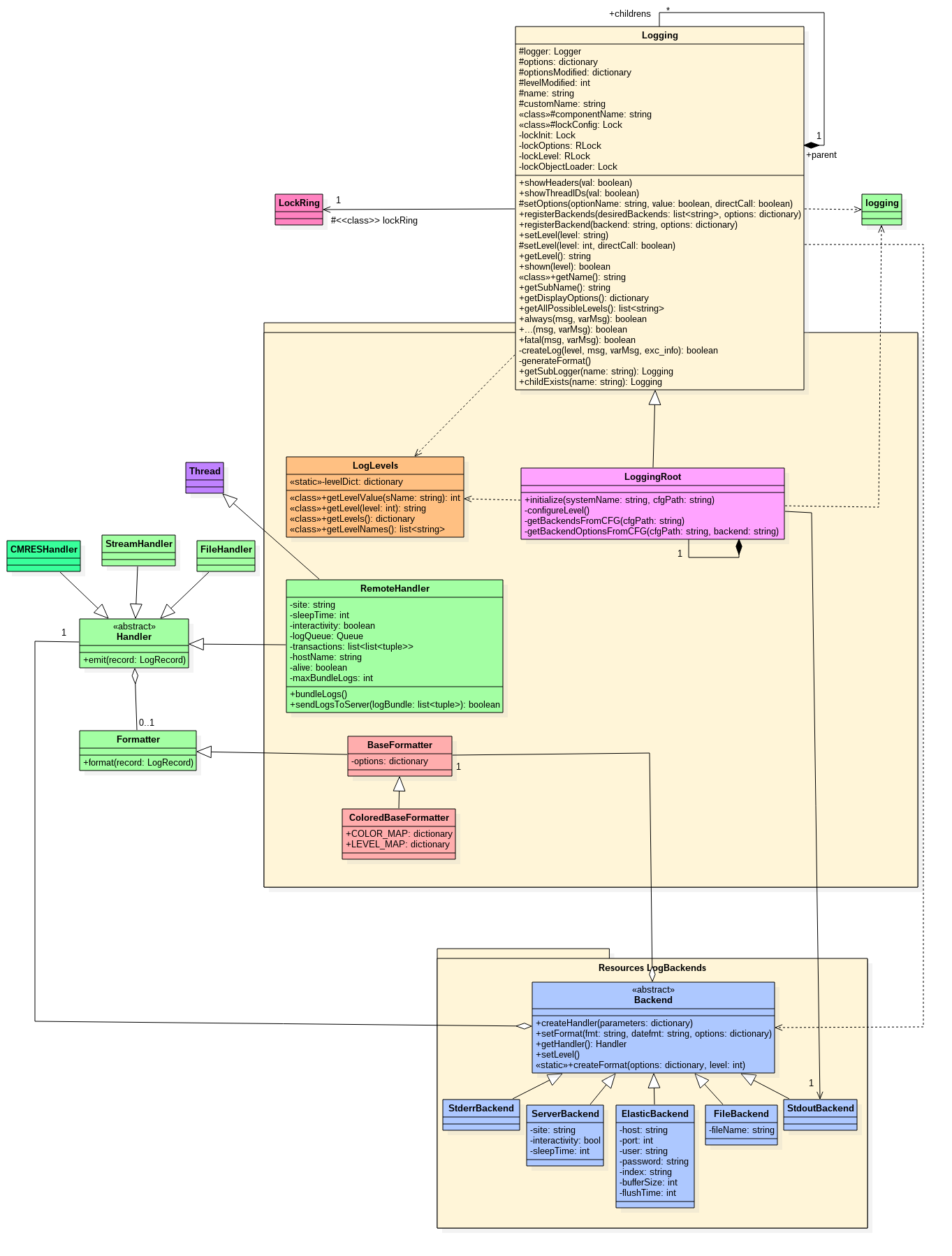gLogger Development
Here is the gLogger documentation for developer briefly presenting the different components of the logging system and their locations.
The logging system package
The source code is contained in the FrameworkSystem/private/standardLogging package. There, we can find the Logging, LoggingRoot and LogLevels classes and the Handler and Formatter packages. We can also find the Backend package that use the Handler and Formatter package in Resources/LogBackends.
Logging
Logging is a wrapper of the logger object from the standard logging library which integrates some DIRAC concepts. It is the equivalent to the Logger class in the old logging system.
It is used like an interface to use the logger object of the logging library. Its purpose is to replace transparently the old gLogger object in the existing code in order to minimize the changes.
LoggingRoot
LoggingRoot inherits from Logging. It is specific because it is the first parent of the chain. In this context, it has more possibilities because it is the one and the only that can initialize the root logger of the standard logging library and it can configure it with the configuration thanks to the initialize method.
LogLevels
LogLevels is used to integrate custom levels to the standard library. Actually, it contains a class dictionary attribute named levelDict containing all the level names and their associated integer values. Its purpose is to make string-integer level conversion.
LogBackend package
Backend objects are used to create an abstraction of the Handler and Formatter concepts from the standard library. It is an equivalent of the Backend concept of the old gLogger. All the existing Backend objects are located in this package which currently contains:
’stdout’: StdoutBackend
’stderr’: StderrBackend
’file’: FileBackend
’server’: ServerBackend
In order to create custom Backend objects, we just have to make a new class named [Backendname]Backend in this package inheriting from AbstractBackend. For instance, the class name of the stdout Backend is StdoutBackend. We may also need to override setHandlerParameters, to get the Backend parameters and pass them to the handler.
Then, to use it, we just have to add its name in the configuration as usual.
Handler package
The Handler package contains all the custom Handler objects created for a DIRAC use. All these Handlers must inherit from the standard logging.Handler.
In order to create custom Handler objects, we just have to write a new class in this package inheriting from one of the Handler of the logging library.
Formatter package
The Formatter package contains all the custom Formatter objects create for DIRAC use. All these Formatter must inherit from the standard logging.Formatter. The package currently contains:
BaseFormatter: used only to add some attributes in the constructor
ColorBaseFormatter: used to color the log records
In order to create custom Formatter objects, we just have to create a new class in this package inheriting from BaseFormatter.
gLogger use
To be used in all the existing code, this logging system has to be instantiated in the name of gLogger.
gLogger instantiation
LoggingRoot is instantiated in the name of gLogger in FrameworkSystem/Client/Logger.
gLogger import
To call gLogger with the simple from DIRAC import gLogger, we have to put our variable in the __init__ file of DIRAC.
gLogger and the DIRAC components
Once instantied, gLogger can be configured thanks to its initialize method. Some components like the services, agents and executors use it. You can retrieve the method usage in the ConfigurationSystem/Client/LocalConfiguration file in the initLogger method used by the dirac-service, dirac-agent and dirac-executor scripts.
The class diagram
Here is a class diagram presenting the system logging:
